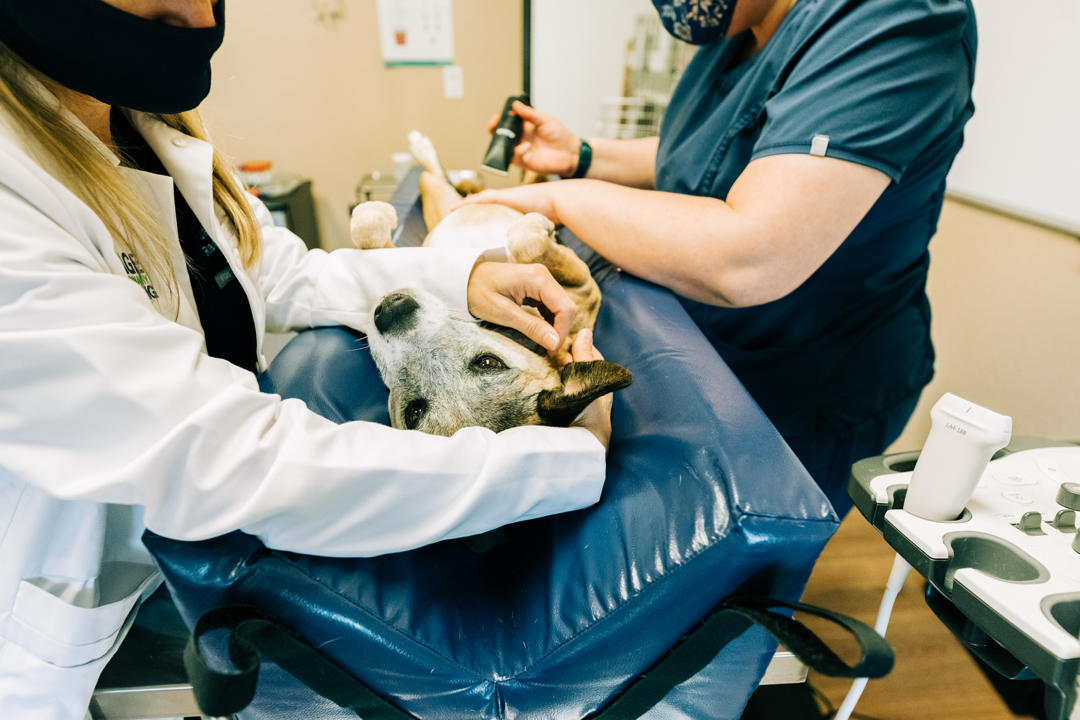Q&A With a Vet: Neurosurgery
We get a lot of questions about our services. No surprise, considering the number of different types of equipment we have! In an effort to help our current and future patients, we are adding Q&A With a Vet to our blog posts. You have the chance to hear from a doctor on exactly what we do and what to expect for your pet.
This week, we cover neurosurgery - yep, the brain stuff! There’s more to it than that though. Some of the most common questions and answers about veterinary neurosurgery are here. And you get a glimpse of what’s to come if your pet needs the help of Sage Veterinary Imaging.
Ultimately, at Sage Veterinary Imaging, we are here to help you find answers for your pet. For more information about veterinary neurosurgery, you can read more about our Services. But for now, dive right into our vet’s answers to your burning questions about neurosurgery for pets below.
Neurosurgeons are trained to perform surgery on any part of the nervous system.
What is neurosurgery?
Neurosurgery in the veterinary field is a broad term that can include surgery of the brain, spine, spinal cord, muscles, and nerves. Unlike in human medicine, veterinary neurologists do not tend to subspecialize and are trained to perform surgeries on any part of the nervous system. Some neurologists will prefer certain kinds of neurosurgeries; so they may choose to perform only certain surgeries and refer to other surgeons or neurologists for others.
What can be treated with neurosurgery?
Brain:
In the brain, surgery can be performed to treat brain abscesses, biopsy and decompress brain tumors, and address malformations putting abnormal pressure on the brain.
Spine and Neck:
Many procedures are available for the spine. The most common spinal surgeries (and most common neurosurgical procedures in general) are to address intervertebral disc disease.
In the neck, a ventral slot is the most common surgery performed. In the back, the most common surgery is a hemilaminectomy.
Additional surgeries include spinal stabilization for instability or spinal fractures, correction of malformations, tumor removal, and biopsy of unusual pathology. The primary goal of any spinal surgery is to alleviate pressure on the spine, resulting in improvements in comfort and function for patients, and may aid in accurate diagnosis of disease.
Muscle and Nerves:
The most common reason for surgery on the muscle or nerves is to biopsy these structures to identify the cause of neuromuscular weakness. This is a weakness caused by a disease of the muscles or nerves, rather than the spine.
A dog is prepped for imaging services at SVI in Round Rock, Texas
How long will my pet be hospitalized for?
Duration of hospitalization is highly variable for any neurosurgery. Most patients will need to stay at least one night in hospital, often longer (2-5 days) based on their particular surgery and individual recovery process.
What can I expect after surgery?
Pets will be discharged with medications for management of post-operative pain and inflammation. Most patients do not need antibiotics after surgery unless an implant was placed during the procedure or if the lining of the spinal cord is not intact.
The rest period for most neurosurgeries is 4-6 weeks and is imperative for optimal recovery. This may be shorter or longer depending on the location and nature of the surgery.
Patients with implants for correction of fracture or instability will be required to rest for 8-10 weeks after surgery. Rest entails strict confinement in a kennel or small exercise pen at all times except for short, leashed, walks to go potty.
Outcomes are highly variable per surgery. The most common surgeries for acute disc herniation generally have very good outcomes with a 90% or better chance of improved strength and function after surgery. This may vary based on chronicity or severity of the disease being corrected. Your neurologist can provide you more specifics on your pet’s expected outcome after neurosurgery.
What kind of follow up will be required after surgery?
Most neurosurgeries have at least one follow-up exam, typically two weeks after surgery. Depending on the complexity of the procedure and disease, additional follow ups may be recommended.
Sage Veterinary Imaging - Leaders in Neurosurgery for Pets
Diagnosis and treatment go hand-in-hand at Sage Veterinary Imaging. With 3T MRI, and a fully-equipped neurosurgery suite in Round Rock, Texas, and Sandy, Utah, we accurately visualize, diagnose, and treat complex neurological conditions for dogs and cats in one place.
Dr. Larry Gainsburg at SVI in Round Rock, Texas
Dr. Gainsburg started the first veterinary neurology and neurosurgery practice in the Baltimore area in 1987. He has been practicing veterinary neurology and neurosurgery for over 32 years.
He graduated from the University of Florida College of Veterinary Medicine in 1980. He then spent 3 years in general and emergency practice before completing a residency in Neurology at the University of Pennsylvania School of Veterinary Medicine, followed by a clinical fellowship in Neurology and Neurosurgery at the North Carolina State University College of Veterinary Medicine.
For the past 20 years, Dr. Gainsburg has been performing MRIs for pets at Johns Hopkins University while also contributing to numerous clinical research studies that improve the lives of animals with neurological conditions.
Since 2001 and prior to joining Sage Veterinary Imaging, Dr. Gainsburg worked with Dr. Jaime Sage (Founder and Head Radiologist at SVI) and her mentor Dr. Patrick Gavin making diagnoses and treating pets with neurological disorders in Round Rock, Texas.



